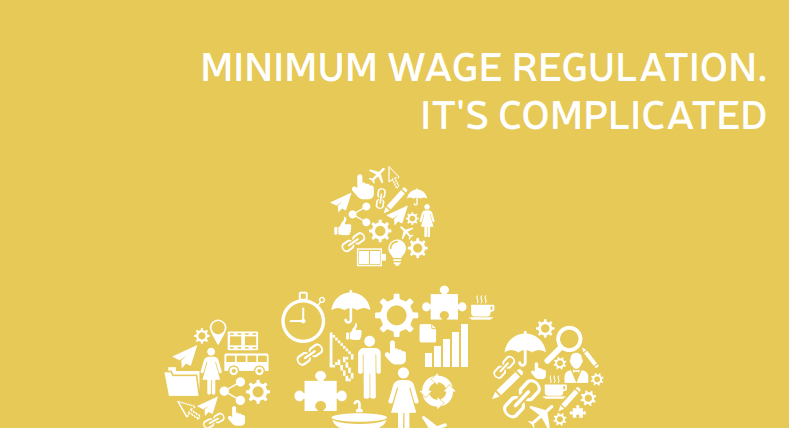Executive summary
A mandatory minimum wage is a complicated and inaccurate policy tool for poverty reduction that involves unintended consequences and drawbacks. Its downsides and pitfalls are frequently overlooked. Real effects of increases in mandatory minimum wage are hard to measure due to a lack of counterfactual analysis or even reliable data measuring how businesses cope with increases in minimum wages.
There is evidence showing that increases in mandatory minimum wage might force some firms to increase prices, lay off workers, cut fringe benefits for employees and engage in other revenue-boosting or cost-cutting measures. Additionally, a high mandatory minimum wage might stimulate the spread of the shadow economy.
A high level of mandatory minimum wage may “flatten” incomes and result in reduced effort and disincentivization of workers earning slightly more than the minimum wage. These effects can at least partially be countered by mandatory minimum wage driving all wages up. However, this may also result in an inflationary spiral or contribute to inflationary pressures.
Studies from various international organizations recommend setting mandatory minimum wage between 30 and 40 percent of the average wage and differentiating it to lower negative effects.
Differentiation of mandatory minimum wage (by age, area, occupation etc.) may offset some of the negative effects of a relatively high mandatory minimum wage, by allowing lower minimum wage levels for some workers. At the same time differentiation may ramp-up mandatory minimum wage for certain groups even higher.
Our research spans eight countries. We review minimum wage statistics and policies in Bulgaria, Denmark, Estonia, the Czech Republic, Lithuania, Poland, Slovakia, Switzerland.
In most EU countries the mandatory minimum wage accounts for more than 40 percent of the average wage. In the countries under review the minimum wage has grown faster than the average wage and labor productivity since the financial crisis. Our data indicate that a higher ratio between the minimum and average wages is linked to higher unemployment levels.
Most European countries have a statutory minimum wage. Most of the countries under review apply no formal criteria for setting the minimum wage, and minimum wage setting appears to be a politicized matter.



